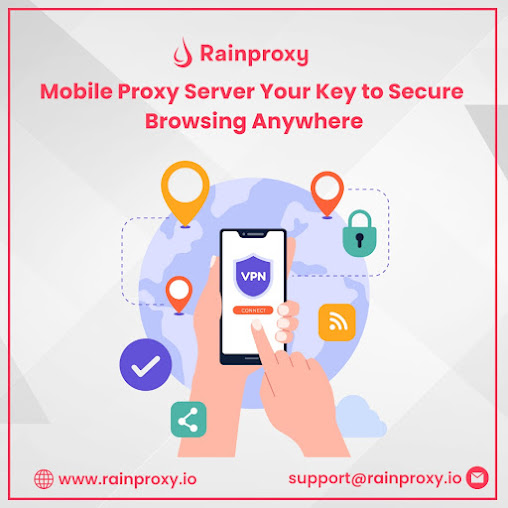How to Easily Setup Proxy on Your Android Device?
A proxy is a server between your computer and the internet. As a result, it is beneficial to use an alternative channel rather than the network connection provided by your internet service provider. Various situations call for the deployment of a proxy server for multiple reasons. You can, however, configure your device to utilize a proxy instead of the default connection for all network activity.
Why Use Proxy Server?
Here are several scenarios where using a proxy server can be beneficial:
Similar to a VPN service, mask your IP address and browse anonymously.
Access websites that are prohibited or otherwise inaccessible where you are.
To observe events and activities that are only available in that area, access websites from nearby places. You may watch a sporting event that is only televised in one nation, for instance.
Why Not Use Free Proxies?
It's not always a good idea to utilize free Android proxies: Free proxies for Android phones are available from some companies. Using a free Android proxy could come with risk because the proxy server might not be adequately protected, making it possible for hackers to eavesdrop on your internet traffic and steal your personal data. Free proxy service providers might not have as much money as paid proxy service providers to spend on security measures like firewalls and encryption technologies.
Using a free Android proxy also carries the danger that the service provider will gather and sell your personal information to third parties, including your IP address and browser history. Your privacy may be compromised, and you may be subject to spam or other unwanted communications as a result.
Generally speaking, using a paid Android proxy service is safer if it has a history of offering its users secure and confidential services. However, it's still crucial to conduct your own investigation and due diligence to make sure the proxy service provider you select is reliable and provides the amount of security and privacy you require.
How to Configure Proxy?
Only Google Chrome and other web browsers can set up the proxy server on your Android Smartphone; other apps might not be able to use it. Only the App developer has the option to utilize or not use Android's proxy. The ability to force all network traffic through a VPN connection is the reason proxy connections are preferable to VPN connections. Here are the steps that you can follow to setup proxy in Android.
To browse a list of all available Wi-Fi networks, first, open your Android apps on your Smartphone and choose the Wi-Fi option.
Press and hold the name of the Wi-Fi network whose proxy settings you want to modify. When the menu appears, choose "Modify Network" after that.
On the screen, select the "Advanced settings" menu item. After selecting "Proxy," you have the choice of selecting "None" for any proxy settings. Older Android versions might not have the "Proxy Auto-Config" option. You can type the location of a.PAC file, or proxy auto-configuration script, address.
Other operating systems, such as Windows, MacOS, iOS, and Chrome, occasionally do not support WPAD. This can be used to spread proxy servers across a network in corporations and schools. When using WPAD, Android must be directed to either automated or manual proxy server settings.
If you want an Android bypass for any website, simply type its address in the "Bypass proxy for" box, separating each one with a comma. To save changes, select the "Save" button.
Every Wi-Fi network has its unique configuration for the proxy server. It is not possible to enable more than one proxy server for a single Wi-Fi network. Every time you turn on your Wi-Fi, you have to change the settings.
Conclusion
Proxies will work efficiently and smoothly on search engines. However, there can be difficulties with some apps. If app developers don't allow users to use proxies, some apps won't work. Therefore if you are looking to use a back connect proxy or residential proxy USA, then you should get it from a trusted provider such as Rainproxy.
.jpg)



Comments
Post a Comment